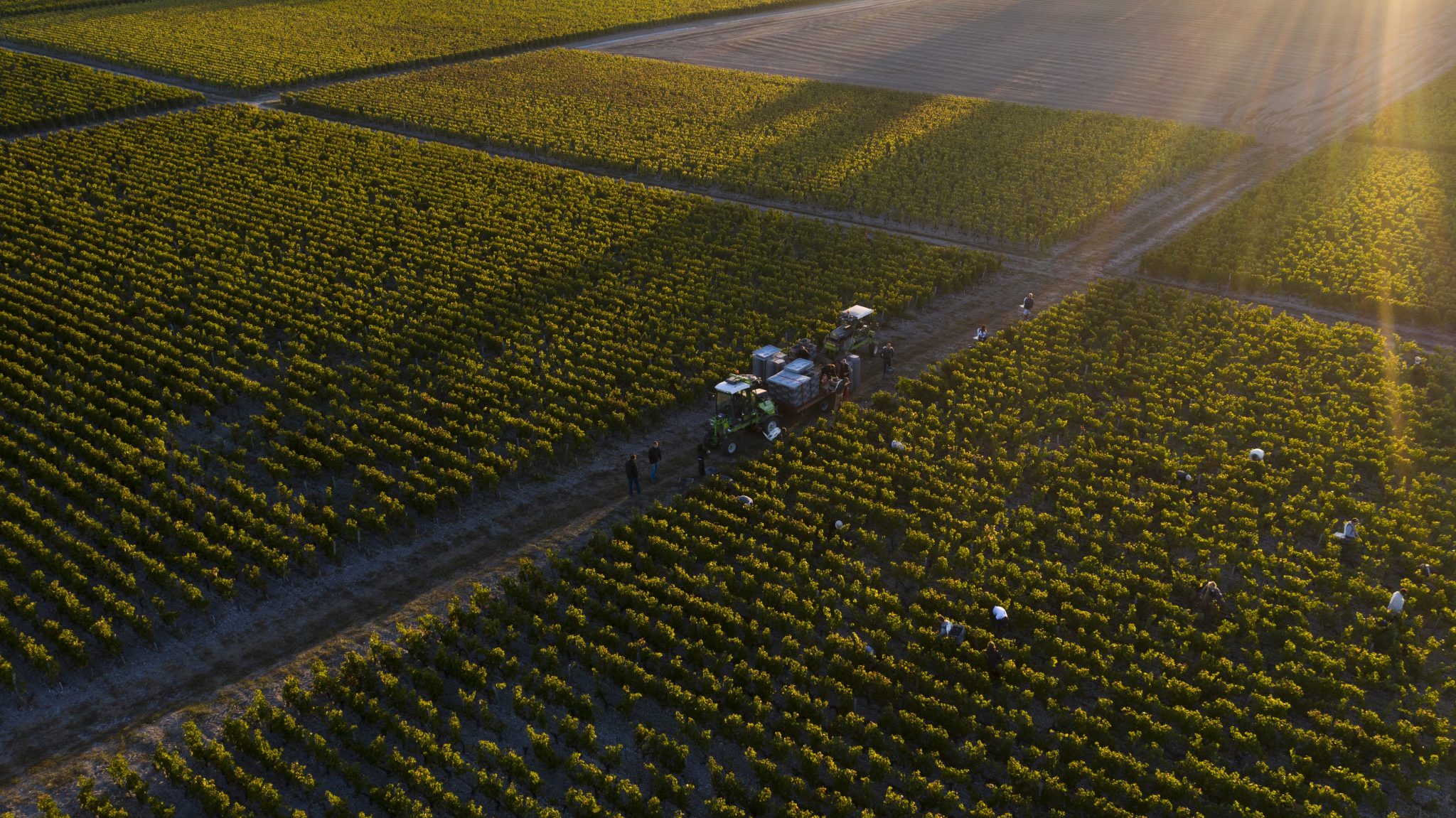We’ve tried to give a concise picture of the growing season, looking at the key points. For a more in depth analysis, we highly recommend Gavin Quinney’s ‘Weather and Harvest report’ – available here.
A hot and very dry vintage saw half of the average rainfall over the growing season, which has led to early harvests and very small berries – particularly in Cabernet Sauvignon; reduced yields are likely to lead to lower availability for some properties, and some price increases are expected.
‘It gives us hope that both man and nature can adapt to these circumstances and produce outstanding wines, both red and white.’
James Suckling
- A cool and dry winter was preceded by a wetter than average year in 2021 – water tables were fuller than they had been in some previously hot years.
- A warm spring followed, with early bud-break and flowering in mid-May.
- Many châteaux have adapted agricultural practices to deal with hotter vintages – for example, planting crops in-between vines – to increase water retention and reduce evaporation.
- Late spring’s decreasing water supplies shows examples of the vines adapting to hotter years, where growth of the plants slowed, while producing fewer shoots than average.
- 110 millimetres of rainfall in June helped ease some of the early stress, with Lafite claiming this helped them ‘stay on course’.
- Extreme temperatures hit as high as 41’c on several occasions through three successive heatwaves in June (14th-18th), July (11th-18th) and August (8th-12th). However, Bruno Borie at Ch. Ducru Beaucaillou pointed out that the heatwaves were shorter in length and therefore less intense than they had been in previous years.
- The temperatures and lack of water led to much smaller than average berries, with Ch. Margaux reporting berry weight was down 35% on the average.
- Merlot has coped very well with the conditions and makes up significant parts of the blend across all regions. For the first time ever Margaux’s Ch. Angludet is predominantly Merlot.
- Precious rainfall between 13th and 25th August helped rejuvenate many stressed vines.
- For many it was one of, if not the earliest harvest on record, most beginning in late August and finishing by the end of September.
- Experience and know-how gained from 2018, 2019 and 2020 mean that most winemakers are now well prepared in viticultural practices to suit hotter vintages. This, coupled with vine adaptation and far more precise winemaking methods have led to some truly incredible wines.


